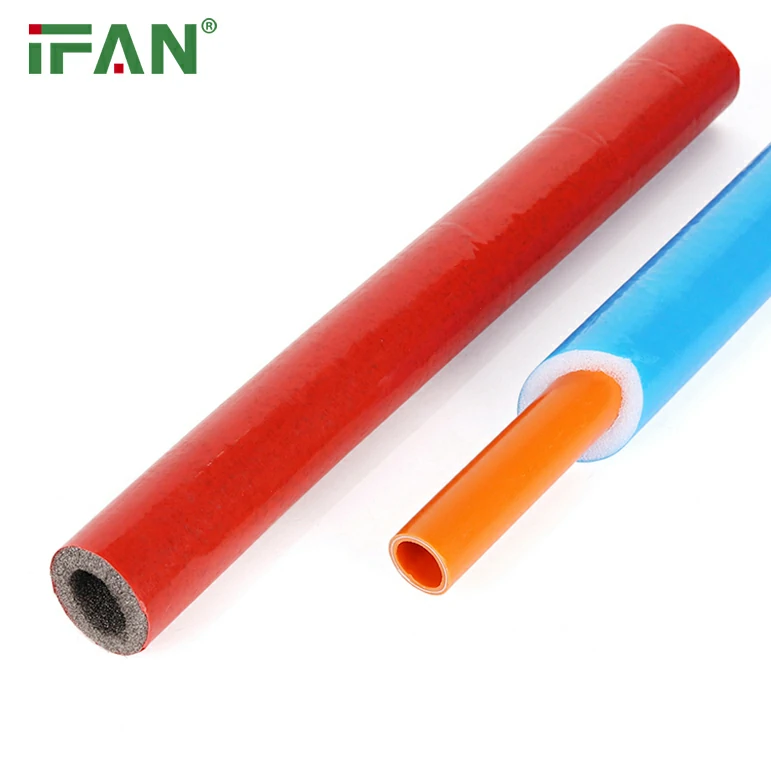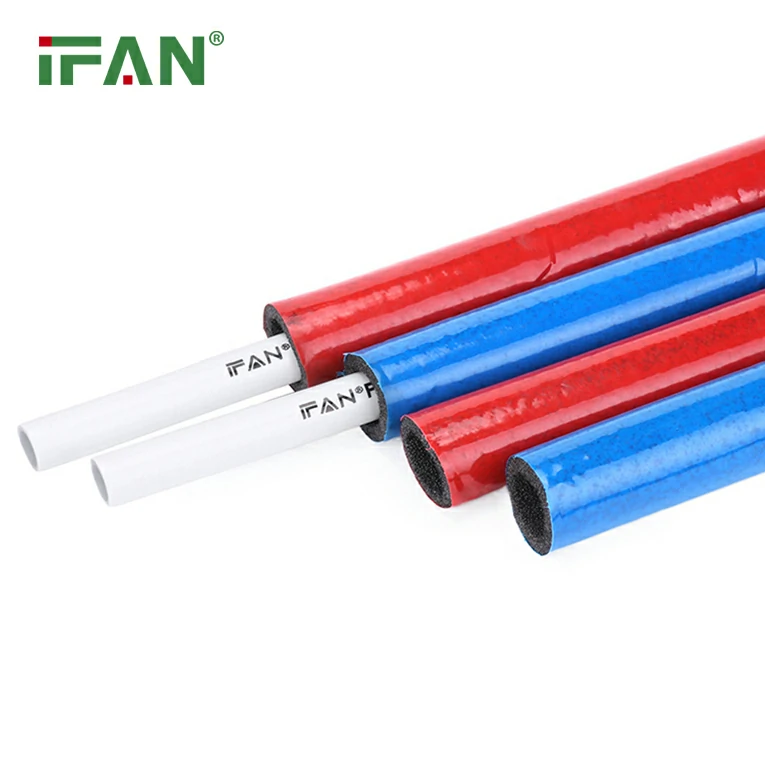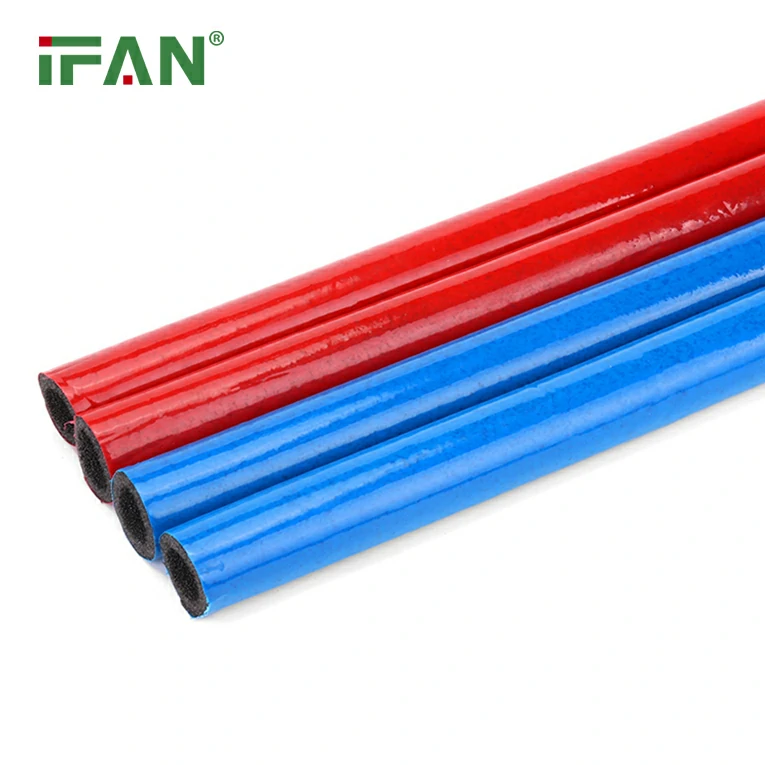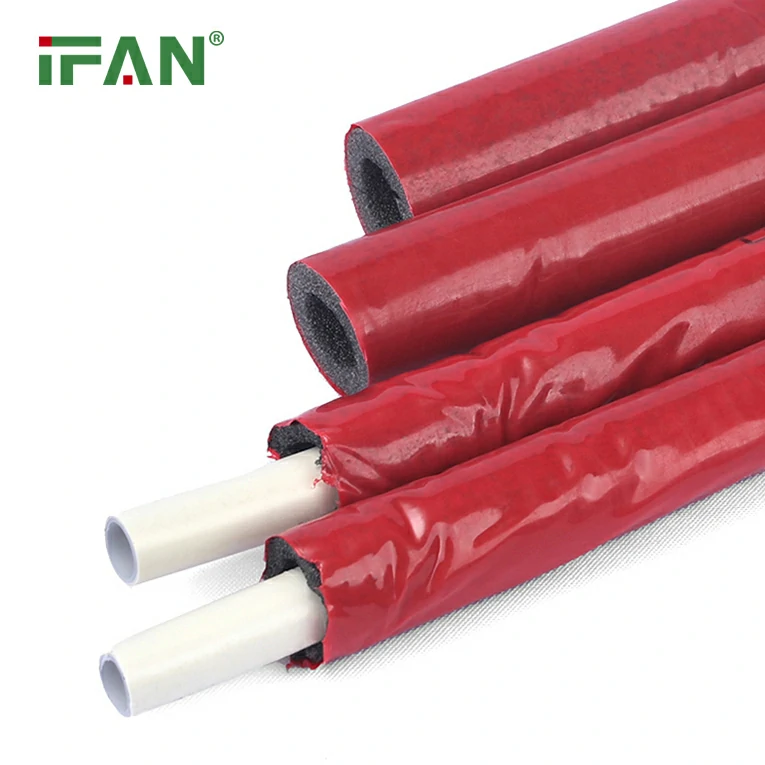PEX (cross-linked polyethylene) tubing has become a popular choice for both plumbing and heating systems. Its flexibility, durability, and ease of installation make it a go-to material for many home improvement projects. However, choosing the right PEX pipe involves understanding the different types and sizes available. This guide will walk you through everything you need to know about PEX tubing to make an informed decision when shopping for it.
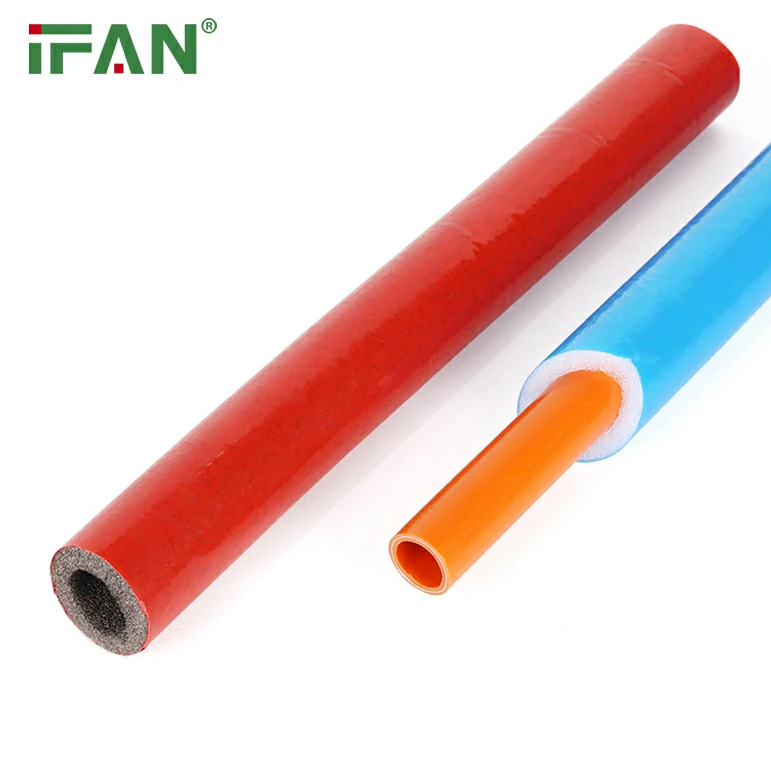
Table of Contents:
- What is PEX Tubing?
- Types of PEX Tubing
- PEX-A
- PEX-B
- PEX-C
- PEX Tubing Sizes
- Common Sizes of PEX Tubing
- How to Choose the Right Size for Your Project
- Benefits of Using PEX Tubing
- Common Applications of PEX Tubing
- How to Install PEX Tubing
- Frequently Asked Questions (FAQs)
What is PEX Tubing?
PEX tubing is a type of flexible plastic piping made from cross-linked polyethylene. It’s used in residential and commercial plumbing systems for water supply lines, radiant heating, and more. Unlike traditional copper or PVC pipes, PEX is resistant to freezing, corrosion, and scaling, making it an ideal solution for both new construction and renovation projects. PEX tubing is also lightweight, easy to install, and more affordable compared to other materials.
Key Features of PEX Tubing:
- Flexibility: PEX is highly flexible, allowing for easier installation around corners and through walls without needing many fittings.
- Corrosion Resistance: Unlike metal pipes, PEX does not corrode over time, which can extend the lifespan of your plumbing system.
- Durability: PEX is highly resistant to both freezing and thawing, which makes it less likely to burst during cold temperatures.
- Ease of Installation: With no need for glue, soldering, or threading, PEX is easier to install and requires fewer tools.
Types of PEX Tubing
There are three main types of PEX tubing: PEX-A, PEX-B, and PEX-C. Each type has different characteristics and applications. Understanding the differences between these types will help you choose the right PEX pipe for your specific needs.
PEX-A
PEX-A is the most flexible and durable type of PEX tubing. It is made using a process called the Engel method, which involves cross-linking the polymer through a chemical process. PEX-A is considered the highest quality PEX tubing and is often used in both plumbing and radiant floor heating systems.
- Advantages of PEX-A:
- High flexibility, allowing for easy installation.
- It can be bent and curved without the need for fittings.
- Resists kinking better than other types of PEX.
- It has a higher level of cross-linking, making it more resistant to high temperatures and pressure.
- Ideal for cold and hot water applications.
- Disadvantages of PEX-A:
- More expensive than PEX-B and PEX-C.
PEX-B
PEX-B is produced using the Silane method, which cross-links the polymer through a moisture-curing process. While PEX-B is slightly less flexible than PEX-A, it is still a popular choice due to its strength and cost-effectiveness.
- Advantages of PEX-B:
- Cost-effective compared to PEX-A.
- More resistant to chlorine than other types of PEX.
- Strong and durable for residential plumbing.
- Available in longer lengths, making it suitable for large installations.
- Disadvantages of PEX-B:
- Not as flexible as PEX-A, requiring more fittings.
- Slightly less resistant to freezing temperatures than PEX-A.
PEX-C
PEX-C is created using a chemical cross-linking process and is the least flexible of the three types. However, it still offers decent strength and durability for various applications.
- Advantages of PEX-C:
- More affordable than PEX-A and PEX-B.
- Available in a variety of sizes and lengths.
- Resistant to scale and chlorine.
- Disadvantages of PEX-C:
- Not as flexible as PEX-A or PEX-B, which may make installation harder.
- Not as durable under high temperatures or pressures.
PEX Tubing Sizes
When shopping for PEX tubing, the size of the pipe you choose is crucial for ensuring that your system works efficiently. The most common sizes of PEX tubing are 3/8-inch, 1/2-inch, 5/8-inch, 3/4-inch, and 1-inch in diameter. However, the right size depends on the application and the water flow requirements.
Common Sizes of PEX Tubing
- 3/8-inch: Used for smaller applications like running individual fixtures or for radiant floor heating in smaller spaces.
- 1/2-inch: Commonly used for standard residential water lines, including kitchen and bathroom fixtures.
- 3/4-inch: Typically used for larger applications or to supply water to multiple fixtures in a home.
- 1-inch: Used for larger systems, like those in commercial buildings or homes with higher water demands.
How to Choose the Right Size for Your Project
When selecting the size of PEX tubing, you need to consider the flow rate and the pressure requirements of your system. Larger diameter pipes allow for greater water flow but may not be necessary for smaller homes or fixtures. If you’re unsure of which size to choose, it’s always best to consult with a professional plumber or refer to manufacturer guidelines.
For radiant floor heating systems, the diameter of the PEX tubing also depends on the design of the system. Typically, 1/2-inch PEX is used, but it can vary depending on the floor area and the heating requirements.
Benefits of Using PEX Tubing
PEX tubing offers numerous benefits over traditional piping materials such as copper or PVC. Some of the most notable advantages include:
- Flexibility and Ease of Installation: PEX tubing can bend around corners and curves without the need for additional fittings. This flexibility makes installation faster and easier, especially in tight spaces.
- Cost-Effective: Compared to metal pipes, PEX is more affordable and requires fewer tools for installation.
- Corrosion and Freeze Resistance: PEX is resistant to corrosion and scale buildup, and it will not freeze as easily as metal pipes.
- Long Lifespan: PEX can last for decades with proper installation and maintenance, making it a great investment for long-term plumbing solutions.
Common Applications of PEX Tubing
PEX tubing is used in a variety of applications, from residential to commercial projects. Some of the most common uses include:
- Plumbing: PEX is widely used for cold and hot water supply lines in homes and buildings.
- Radiant Floor Heating: PEX tubing is an ideal choice for radiant floor heating systems due to its flexibility and ability to distribute heat evenly.
- Hydronic Heating Systems: PEX is used in hydronic heating systems to carry hot water through pipes, heating the space in a home or building.
- Water Filtration Systems: PEX can be used in water filtration systems to transport clean water to fixtures.
- Repiping: Many homeowners use PEX tubing to replace old copper or galvanized steel pipes in repiping projects.
How to Install PEX Tubing
PEX tubing is easy to install, but it’s essential to follow the correct procedures to ensure the system works correctly. Here’s a step-by-step guide to installing PEX tubing:
- Plan the Layout: Before beginning the installation, plan out the layout of the tubing. Measure the length of pipe needed and determine where fittings will be required.
- Cut the PEX Tubing: Use a pipe cutter to cut the PEX tubing to the required length.
- Install Fittings: PEX tubing requires special fittings, such as crimp rings or clamp rings. Use the correct tool to secure these fittings to the tubing.
- Connect the PEX to Fixtures: Use the necessary connectors to connect the PEX tubing to the fixtures and appliances in your home.
- Test the System: Once installed, turn on the water supply and check for leaks. Ensure that the system is working correctly before finishing the installation.
Frequently Asked Questions (FAQs)
1. What is the difference between PEX-A, PEX-B, and PEX-C?
- PEX-A is the most flexible and durable type, made using the Engel method.
- PEX-B is more cost-effective and is created using the Silane method.
- PEX-C is the least flexible and is made using a chemical cross-linking process.
2. How do I choose the right size of PEX tubing?
Consider the flow rate and pressure requirements of your system. For standard plumbing, 1/2-inch to 3/4-inch PEX is commonly used. For radiant heating, 1/2-inch PEX is often preferred.
3. Can I use PEX tubing for outdoor installations?
While PEX can be used for outdoor installations, it is important to protect it from UV exposure, as sunlight can degrade the material over time. PEX should be buried underground or shielded from direct sunlight.
4. Is PEX tubing safe for drinking water?
Yes, PEX tubing is considered safe for drinking water when it is compliant with standards such as those set by NSF International.
5. Can PEX tubing freeze?
PEX tubing is highly resistant to freezing compared to other materials like copper or PVC. However, it is still a good idea to insulate PEX in areas prone to extreme cold.

